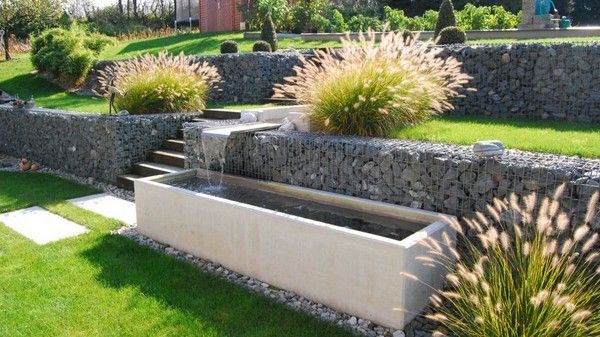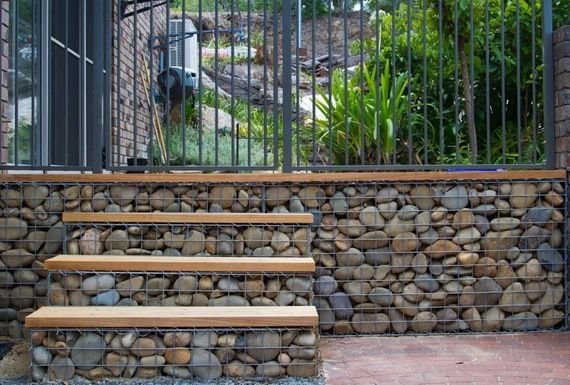Mar . 12, 2024 16:00 Back to list
gabion-Everything You Need to Know About Gabion Walls
Everything You Need to Know About Gabion Walls

Gabion walls were used to protect the banks of the Nile in ancient Egypt over 7,000 years ago, and they’re still used today by civil engineers all around the world as an incredibly effective and efficient retaining wall. Good news for you: they’ll also work just as well in your backyard to protect your landscaping from soil erosion. But what exactlyisa gabion wall?
The word “gabion” is taken from the Italian “gabbione,” meaning “big cage”—and that’s exactly what a gabion wall is! It’s an enclosure that holds inorganic materials including stone, brick, concrete pieces, and more in the shape of a sturdy wall. Historically, gabions were made out of wicker cages, but today they’re made of sturdy galvanized steel wire mesh. You can easily purchase premade gabion cages and pack them with whatever fill material you have on hand, and then boom—you’ve got a gabion wall.
The Pros of Gabion Walls
- Erosion control:Gabion retaining walls reduce wind and water flow to protect any vulnerable areas of your landscape from damage.
- Easy installation:Building gabions is simple and can be learned quickly. They generally don’t have to be dug into the ground as their own weight holds them down, and they don’t typically require expert design or installation unless your wall height is over 3 feet.
- Affordability:The price for the steel mesh is relatively low and is offset by skipping the cost of the expert mason you would need to lay a comparable traditional stone wall. The real draw here is that you can choose your own fill material, so you get to set your own price and can use low cost or even free materials.
- Eco-friendliness:Choosing your own fill also means you have the option to use recycled materials or use local materials to reduce shipping costs! You can use stone already on your land, leftover backfill materials, repurposed chunks of broken concrete, and more.
- Permeability:Gabion walls are excellent for reducing wind and water flow without stopping it entirely and rerouting that deluge elsewhere. Instead, water is allowed through as a gentle trickle and strong wind can still pass through the fill as a cooling breeze.
- Longevity:Gabions are incredibly long-lasting and only get stronger as they age. As the fill material settles and the gaps are filled with silt, plants, and detritus, the wall simply becomes sturdier. They can rise and fall entirely undamaged as the earth shifts in freeze cycles. The biggest threat to a gabion wall is rust to their steel frame, which is typically only an issue in coastal areas with heavy salt spray.
- Aesthetics:The sleek metal cage of a gabion wall provides very clean, modern lines. You can accentuate that with your fill material or contrast it with rustic stone for an appealing marriage of rustic and modern design styles. Even better, using a local stone offers a way to show off beautiful regional materials.
The Cons of Gabion Walls
- Aesthetics:While many people find the clean lines and industrial edge of gabion walls appealing and invigorating, others find that modern style to be too jarring for their garden. Their unique style has to be matched with the right landscape and the right landscaper.
- Not suitable for small projects:Gabions are bulky, and their rigid frames mean that they’re not easy to bend and shape. They’re wonderful for creating large, bold, straight lines, but not well suited for small spaces or curved walls.
- Possible animal habitats:The nooks and crannies in gabion walls make them an appealing nesting site for all sorts of burrowing critters. That can be a positive if you enjoy sharing your space with local wildlife, but not everyone is looking to invite a new neighbor into their yard.

How to Use Gabion Walls in Landscape Design
Despite their frequent industrial usage, it doesn’t have to be difficult to elegantly incorporate gabion walls into your yard. They’re a natural fit for any modern design style, making them look at home alongside clean lines, sleek concrete, and shiny metal. However, they can also pair nicely with more traditional landscaping styles when filled with natural stone.
They are most typically used for retaining walls, but that’s just the start of their potential. Clever retaining wall design can allow them to perform double duty as erosion control and outdoor benches with the simple addition of poured concrete slabs on top. They can be used to divide a space, surround an outdoor fire or planters, add privacy, or add visual interest with interesting fill materials.
Because gabion wall building materials are so varied, you have many options for the final look of your finished wall. The most stable fill materials are chunky and angular, allowing them to lock together and prevent shifting. With that rule in mind, almost any sturdy material is fair game!
Stone is the most common option, which offers a wide selection of colors, textures, and regional specialties. Recycled construction materials are another favorite—chunks of concrete pulled up from patios, industrial sites, and even roads make for an ideal eco-friendly fill. If you’re less worried about stability and more worried about style, your options open up even further. Designers have filled gabion baskets with rustic wood logs and even colorful glass pieces for a sparkling effect in the sunlight.
Cost of a Gabion Wall
The first price tag to consider is for the metal gabion cages. They can be custom made for specific projects, but the industry standard for selling pre-fabricated gabion cages is in 3 foot sections. As a rule of thumb, you can estimate a cost of approximately $35 per cubic yard for a typical galvanized stainless steel wire mesh gabion cage.
With that out of the way, it’s time to consider your fill material. The costs here range wildly and are entirely up to you. You may choose to opt for a luxurious imported stone or snag a free truckload of broken concrete that was headed for the dump. Whether you’re a bargain hunter or willing to splurge, you can still end up with a gorgeous new garden wall.
Other costs to consider include possible gravel fill if you need to create a level surface for your cages and consults with a landscape architect or engineer if you’re building a wall that’s load bearing, over 3 feet tall, or structurally significant.
Are you ready to dive into building a gabion wall? Their versatility and convenience makes them an ideal choice for a wide variety of landscaping needs and styles. If you’d appreciate some expert advice in planning out your newest landscape additionbeforeyou start purchasing wire mesh in bulk,we can help! Our landscape architects are experts in creating functional and beautiful gabion walls that will help bring your landscape to life.
-
Visualizing Gabion 3D Integration in Urban Landscapes with Rendering
NewsJul.23,2025
-
The Design and Sustainability of Gabion Wire Mesh Panels
NewsJul.23,2025
-
The Acoustic Performance of Gabion Sound Barriers in Urban Environments
NewsJul.23,2025
-
Mastering the Installation of Galvanized Gabion Structures
NewsJul.23,2025
-
Gabion Boxes: Pioneering Sustainable Infrastructure Across the Globe
NewsJul.23,2025
-
Custom PVC Coated Gabion Boxes for Aesthetic Excellence
NewsJul.23,2025
-
Installation Tips for Gabion Wire Baskets in Erosion Control Projects
NewsJul.21,2025






